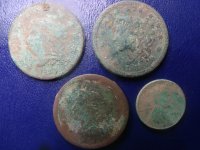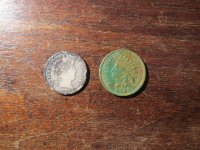bapowellphys
Tenderfoot
- Jun 22, 2023
- 5
- 3
Hi all,
I just acquired a gorgeous lunar meteorite slice (NWA 15373) and I notice it has a multiple fine scratches to its surface. On one side these are parallel (but following a curved path) suggesting they were the result of the cutting process? (There is also uneven shine on this face).

On the other side, the lines are more randomly arranged, though tend to follow a similar direction:

Since I spent a decent chunk of change on this specimen, I'm mostly wondering whether this is something that can be expected or whether this is suggestive of poor preparation, care, etc.
Secondly, is there anything that I can do to polish out these scratches? I'm an amateur with no specialized knowledge or tools.
Thanks for your help!
Brian
I just acquired a gorgeous lunar meteorite slice (NWA 15373) and I notice it has a multiple fine scratches to its surface. On one side these are parallel (but following a curved path) suggesting they were the result of the cutting process? (There is also uneven shine on this face).
On the other side, the lines are more randomly arranged, though tend to follow a similar direction:
Since I spent a decent chunk of change on this specimen, I'm mostly wondering whether this is something that can be expected or whether this is suggestive of poor preparation, care, etc.
Secondly, is there anything that I can do to polish out these scratches? I'm an amateur with no specialized knowledge or tools.
Thanks for your help!
Brian





